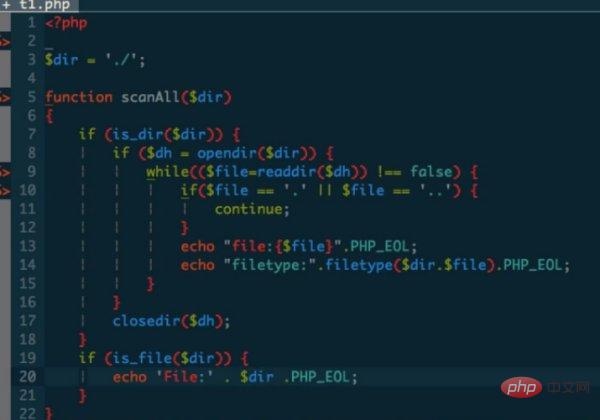What harm can be directly caused by directory traversal attacks?
The harm of directory traversal attacks: Path traversal vulnerabilities allow malicious attackers to break through the security controls of web applications and directly access sensitive data that the attacker wants, including configuration files, logs, source code, etc., and set the location of the website. The server is not working properly and the website is paralyzed.

The operating environment of this tutorial: Windows 7 system, Dell G3 computer.
The benefits are more complicated. There are some small-scale DDoS attackers who are just for vanity and basically have no benefits. However, organized and purposeful DDoS attacks have a complex chain of interests. Generally, there are scammers. Pay the attacker. For the victim, the harm is the website. The server where the website is set up cannot work properly and the website is paralyzed. The damage is great.
Path traversal vulnerability allows malicious attackers to break through the security control of web applications and directly access sensitive data that the attacker wants, including configuration files, logs, source code, etc., combined with the comprehensive utilization of other vulnerabilities, the attacker Higher permissions can be easily obtained, and such vulnerabilities are also very easy to discover. As long as the read and write function blocks of the Web application are directly manually detected and judged by the returned page content, it is very intuitive and can be exploited. It's also relatively simple.

Extended information
Directory traversal attack
1. Description
The attacker passed Directory convenience attacks can obtain system files, server configuration files, etc. Generally speaking, they exploit server APIs and file standard permissions to carry out attacks. Strictly speaking, directory traversal attacks are not a web vulnerability, but a design "vulnerability" of website designers.
If web designers design web content without proper access control to allow http traversal, attackers can access restricted directories and execute commands outside of the web root directory.
2. Attack method
The attacker accesses the root directory and sends a series of "../" characters to traverse high-level directories, and can execute system commands and even crash the system.
3. Discover vulnerabilities
1. You can use a web vulnerability scanner to scan web applications. It can not only find vulnerabilities, but also provide solutions. In addition, you can also discover whether there are SQL vulnerabilities and Other vulnerabilities.
2. You can also check the weblog. If you find that an unauthorized user has accessed the cross-level directory, it means there is a directory convenience vulnerability.
4. How to prevent
The most effective way to prevent directory traversal attack vulnerabilities is to control permissions and carefully handle the parameters passed to the file system API. I think the best prevention method is to use a combination of the following two methods:
1. Purify data: hard-code or uniformly code the file name parameters passed by the user, whitelist the file type, and control the files containing Parameters with malicious characters or empty characters will be rejected.
2. The web application can use a chrooted environment to include the accessed web directory, or use an absolute path + parameters to access the file directory, so that it is within the accessed directory even if it exceeds authority. The www directory is a chroot application.
For more computer-related knowledge, please visit the FAQ column!
The above is the detailed content of What harm can be directly caused by directory traversal attacks?. For more information, please follow other related articles on the PHP Chinese website!

Hot AI Tools

Undresser.AI Undress
AI-powered app for creating realistic nude photos

AI Clothes Remover
Online AI tool for removing clothes from photos.

Undress AI Tool
Undress images for free

Clothoff.io
AI clothes remover

Video Face Swap
Swap faces in any video effortlessly with our completely free AI face swap tool!

Hot Article

Hot Tools

Notepad++7.3.1
Easy-to-use and free code editor

SublimeText3 Chinese version
Chinese version, very easy to use

Zend Studio 13.0.1
Powerful PHP integrated development environment

Dreamweaver CS6
Visual web development tools

SublimeText3 Mac version
God-level code editing software (SublimeText3)

Hot Topics
 1387
1387
 52
52


